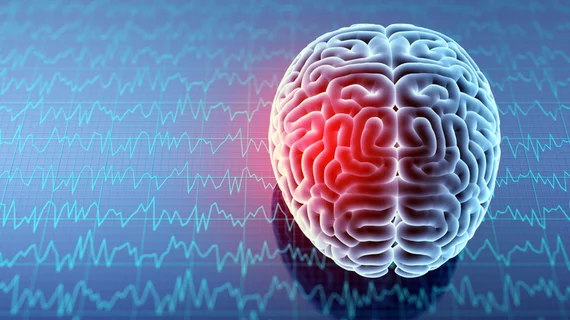Providers still routinely using unnecessary imaging to diagnose mild traumatic brain injury
Imaging is routinely used to assess pediatric patients for mild traumatic brain injuries, despite efforts to quash this costly and unnecessary practice, according to new analysis of commercial claims data.
Current CDC guidelines recommend that physicians use validated decision rules to pinpoint patients at risk for severe brain injury that warrants neuroimaging. There is little value in deploying CT, MRI or X-ray to diagnose mild TBI, experts note, and it may instead result in harm and excess costs.
In 2019, brain CT was performed on about 17% of outpatient visits for children under age 18 (about 23,000 kids) and 1% via MRI (nearly 1,300). Outpatients between the ages of 19 to 24 saw a much higher rate, with 47% receiving CT (nearly 15,000 individuals) and almost 2% undergoing MRI of the brain (527), CDC experts wrote Thursday in Pediatric Radiology [1].
“These [CDC] recommendations are driven by concerns about overuse, inconsistent use and the potential risks (e.g., radiation) associated with head CT when applied to children,” Dana Waltzman, PhD, with the National Center for Injury Prevention and Control in Atlanta, and co-authors wrote March 2. “Despite recommendations to avoid routine use of neuroimaging for [mild traumatic brain injury], neuroimaging remained common practice in 2019,” they added later.
Researchers derived their findings from the MarketScan claims database, incorporating both inpatient and outpatient encounters. Imaging was defined as the patient receiving a head CT, MRI or skull radiograph during their visit with a code used for mild TBI. The final single-year sample included more than 166,000 outpatient encounters for patients age 24 and under, 23% who received CT, 1.3% a skull X-ray and 1.1% MRI. Another 2,249 inpatients were part of the analysis, with 74% receiving CT and nearly 7% getting an MRI.
Children ages 15 to 18 who were treated on an outpatient basis saw a higher rate of neuroimaging for mild traumatic brain injuries, with 21% receiving CT and 1.4% MRI. Outpatient males were 1.22 times more likely to receive a CT compared to females, with no sex-related differences found for MRI or inpatients. Urban residents were less likely to receive a CT during an outpatient visit when compared to those in rural settings. And the latter saw a larger proportion of inpatient admissions that included CT, the authors noted.
“The higher levels of CT use among rural versus urban resident outpatient visits, including ED visits, may be linked to interhospital transfer protocols and variations in guideline adherence,” Waltzman et al. wrote. “Specifically, evaluation for clinically important TBI at rural and community hospitals without resources to manage pediatric trauma patients may result in overtriage (the unintentional prioritization of a patient’s care without significant injuries over other patients with a greater urgency of need), neuroimaging, and further consideration for interhospital transfer for numerous reasons (e.g., clinician experience, hospital resources, parental concern, medicolegal implications).”

